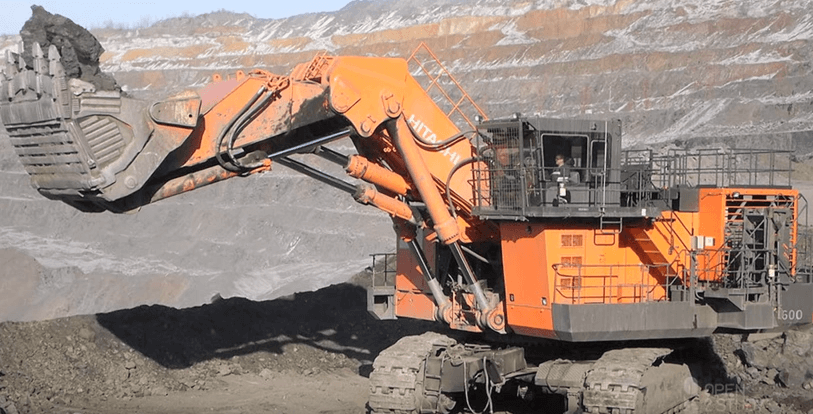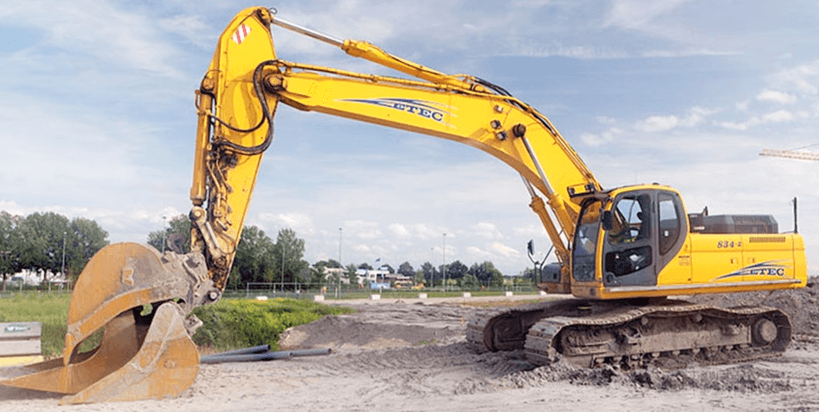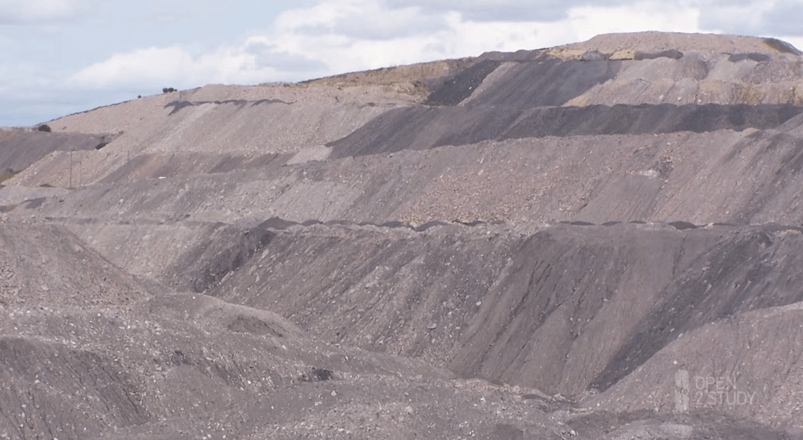The previous topic has established that surface mining operations include several main activities that include the ore extraction or mine of the material, the overburden excavation and removal, the overburden transport, the waste disposal, the low grade material pile and transport for future treatments or separated process. The ore extraction and the material handling process were covered in module one. So in this topic we will outline the main aspects of the other surface mining operation and their relation to equipment and costs. Two main activities of the surface mining operations are the overburden removal and its transport to the disposal areas.
In module one and module three, we saw that the overburden is the waste rock material that is overlying the deposit. The principal overburden excavation machines are draglines, bucket wheel, excavators, power shovels, dozers, dredgers, and graders. And now, let’s look in more detail at a few of them and how they operate. The depth of the overburden, to be excavated before reaching the deposit, its abrasiveness, it hardness and its interface with ore are some of the main characteristics that should be taken into account for the best choice of the most appropriate equipment. In addition, the distance to disposal site, and the topography area, should be considered.
For example, shovel and truck are most suitable for steep and mountainous areas, whereas draglines or bucker-wheels excavators as we can see in these images, are more suitable for gentle or moderate slopes. The initial preparation of the surface mine site starts with the removal of the top vegetation, the solid, and any loose sand or gravel. This activity mainly uses graders, dozers, and shovel trucks. The overburden is then fragmented either by dozer reaping or blasting and it is removed or placed at the disposal site. The overburden is only removed far enough ahead of the operation to ensure an adequate ore supply.
In module one, we learn how the ore, after having been mined is handled, transported, and put in storage. In the same way, the overburden, after its excavation, must be transported and disposed in a disposition site. It’s at this stage that we see that the trucks are the main work forces for this activity, but we should keep in mind that the bigger the distance to the disposition site, higher are transport costs.
In these images we can see the collection and the transport of the overburden material at the Bingham Canyon mine in Utah, USA. The trucks are usually loaded by shovels or excavators before driving to the disposal site where they dump the material, or drop it, in the identified disposal area. In this sequence of images, you can see the dumping of the overburden material from a truck at the Saxon vale Colliery Open Cut, further up in the Hunter Valley in New South Wales, Australia. Then, after dumping the material, the trucks drive back to the loading areas as you can see in this image where an empty truck is driving down a ramp in an open pit diamond mine in Australia.
An alternative matter of transport manner of transport for the overburden is the belt conveyor, and Stephen mentioned it in the previous model. The belt conveyor, compared to the truck haulage transport system, is more energy efficient and less labor intensive. The method is often combined with draglines and crusher excavation methods and it represents a good cost-effective solution. The areas of disposal of the low grade material, or of the material that has been excavated in order to expose the higher degrees material, are called waste dump, or spoil dump, or spoil pile. On placement overburden is rougher to spoil. In these images you can see a spoil dump associated with a truck and dump called a strip mine. An appropriate choice of the waste dump site depends upon the petrography and topography, the volume of waste material that are expected or planned to be exposed, the drainage condition of the site for potential surface and groundwater pollution.
https://youtu.be/fqTB6Eajg5U
In the next topic we will look at the main technique to break the rock mass in order to facilitate the removal of the overburden its transport to the dump sites.
